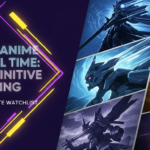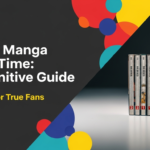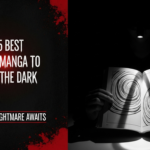So, you’ve journeyed through the captivating anime adaptation of Mushoku Tensei: Jobless Reincarnation and now stand at a crossroads. You’re intrigued, hooked even, by the tale of Rudeus Greyrat’s second chance at life, but the anime leaves you wanting more. The manga seems like the logical next step, right? Yet, whispers and outright warnings echo across forums like Reddit and MyAnimeList: “The manga is bad,” “It’s a poor adaptation,” “Just read the light novel.” It’s confusing, navigating these conflicting opinions when all you want is to continue the story. Many fans find themselves stuck, wondering if investing time and money into the manga is worthwhile or if they should bypass it entirely for the acclaimed light novels.
The Mushoku Tensei manga adaptation offers a visual continuation of Rudeus’s journey but receives mixed reviews regarding its faithfulness to the source material, pacing, and handling of controversial character elements compared to the highly-regarded light novel.
This comprehensive mushoku tensei manga review aims to cut through the noise. We’ll dive deep into what the manga adaptation, illustrated by Yuka Fujikawa based on Rifujin na Magonote’s original story, offers. Drawing upon fan discussions, reviews from platforms like MyAnimeList, and direct comparisons, we’ll explore its strengths, weaknesses, and critical differences from the anime and the light novel source material. By the end, you’ll have a clear understanding of whether the manga is the right choice for you or if your journey should lead directly to the light novels. We’ll cover everything from character development and world-building to the infamous fan service and pacing issues, ultimately helping you decide: Is the Mushoku Tensei manga really that bad?
Key Facts:
* Mixed Reception: The manga holds an ~8.11 score on MyAnimeList, significantly lower than the light novel’s ~8.82, reflecting divided fan opinions.
* Adaptation Concerns: Many dedicated fans consider the manga a “watered-down” or “half-assed” adaptation that omits crucial details and nuances from the light novels (Source: MAL Reviews, Reddit Discussions).
* Pacing Issues: Critics often point out uneven pacing, with some sections feeling rushed while others linger excessively on slice-of-life moments (Source: Simple Phobia, MAL Reviews).
* Content Lag: The manga significantly lags behind the completed light novel series (26 volumes) and is only marginally ahead of the anime adaptation in terms of story progression (Source: Reddit, Quora).
* Ongoing Publication: While the original light novel series concluded in November 2022, the manga adaptation, serialized in Comic Flapper since May 2014, is still ongoing.
What is the Mushoku Tensei Manga About?
The “Mushoku Tensei: Jobless Reincarnation” manga serves as a direct adaptation of the acclaimed light novel and web novel series penned by Rifujin na Magonote, vividly brought to life by the artwork of Yuka Fujikawa. It plunges readers into the life, or rather, the second life, of Rudeus Greyrat. The core premise revolves around a 34-year-old Japanese NEET (Not in Education, Employment, or Training) – overweight, friendless, and reeling from profound regret – who meets an abrupt end saving strangers from a traffic accident, only to be reborn in a vibrant medieval fantasy world. Crucially, he retains all memories of his previous, deeply flawed existence.
This reincarnation isn’t just a simple reset; it’s a profound opportunity for redemption. Haunted by the failures and traumas of his past, Rudeus is fiercely determined not to repeat his mistakes. Armed with the knowledge and maturity (albeit warped) of an adult mind within the body of an infant, he embraces this new world, resolving to live his life to the fullest. The manga chronicles his journey from infancy through childhood and adolescence, focusing intensely on his personal growth, his struggles to form meaningful relationships, his mastery of magic, and his continuous battle against the ingrained flaws and anxieties carried over from his former self. It’s an isekai story, yes, but one deeply rooted in character study and the complex, often uncomfortable, themes of overcoming past trauma and striving for genuine self-improvement.
The Core Premise: Reincarnation and Redemption
“Mushoku Tensei”‘s central premise revolves around the powerful concept of reincarnation as a vehicle for redemption, focusing intensely on the protagonist’s effort to build a meaningful second life while burdened by the regrets of his first. Unlike many isekai narratives where the past life is a mere footnote, Rudeus’s history as a shut-in, bullied, and deeply flawed individual is integral to his character arc in the new world. His adult memories and experiences give him advantages, particularly in learning and social understanding (though often misused early on), but they also saddle him with psychological baggage – social anxiety, perverted tendencies stemming from isolation, and deep-seated insecurities.
The manga adaptation visually explores this internal conflict. Readers witness Rudeus leveraging his past knowledge to excel at magic and studies, yet also see him paralyzed by fear in social situations reminiscent of his past bullying, as noted in reviews like Simple Phobia’s analysis of the initial volumes. His journey isn’t about becoming an overpowered hero instantly; it’s a slow, arduous process of confronting his “deplorable” past self (as one MAL reviewer, Frown129, puts it) and gradually learning to connect with others, trust again, and redefine his self-worth. This focus on a flawed protagonist genuinely striving, and often failing, to be better is a cornerstone of the Mushoku Tensei narrative across all its formats. The manga attempts to capture this struggle, portraying his second chance not as an escape, but as a difficult, ongoing process of atonement and growth.
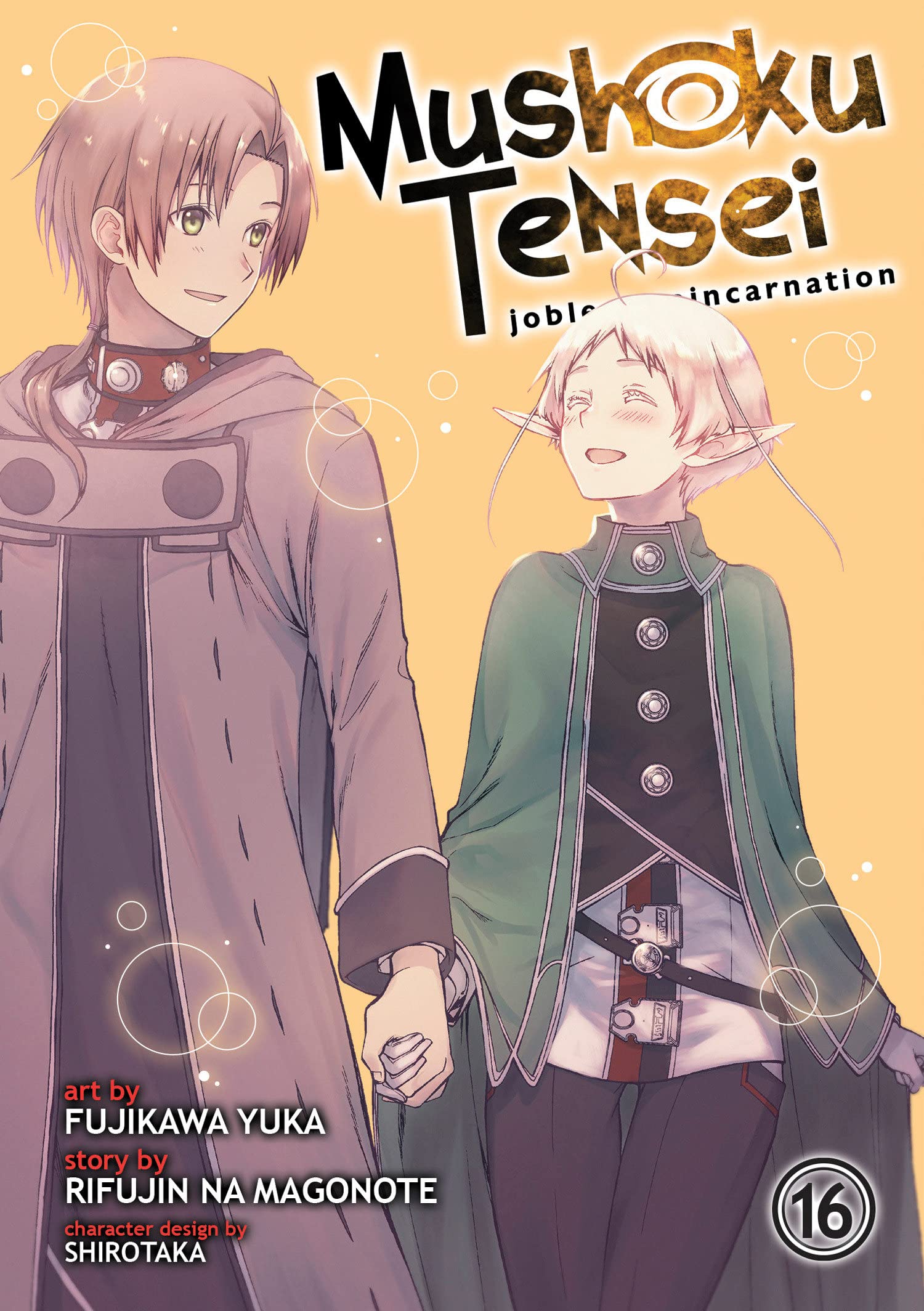
Key Characters Introduced in the Manga
The Mushoku Tensei manga introduces a compelling cast that shapes Rudeus’s development. These relationships are crucial to the narrative’s emotional core:
- Rudeus Greyrat: The protagonist. A complex character carrying the mind and regrets of a 34-year-old NEET into a child’s body. His journey involves learning magic, navigating social dynamics, and battling the perverted and cowardly aspects of his past self. The manga visually depicts his internal struggles and gradual growth.
- Roxy Migurdia: Rudeus’s first magic tutor, a petite Migurd demon known for her magical prowess. She plays a pivotal role in breaking Rudeus out of his initial shell, helping him confront his trauma related to leaving home, and instilling in him a foundation in magic and a degree of respect. Her relationship with Rudeus is initially teacher-student but evolves complexly.
- Sylphiette (Sylph/Fitts): Rudeus’s first childhood friend, initially mistaken for a boy due to her appearance and bullied for her green hair (a trait of the Superd race lineage). She shares Rudeus’s initial social awkwardness and becomes a mirror for his own past experiences with bullying. Their bond forms a significant emotional anchor in the early parts of the story.
- Eris Boreas Greyrat: A fiery, tsundere noble girl and a distant cousin of Rudeus. Initially spoiled and violent, Rudeus becomes her tutor, leading to a tumultuous but deeply impactful relationship. Their shared experiences, particularly during a major catastrophic event, forge a powerful, complex bond that is central to later arcs. The manga details their evolving dynamic from antagonism to deep reliance.
- Paul Greyrat: Rudeus’s father, a former adventurer and skilled swordsman. His relationship with Rudeus is often strained due to Paul’s philandering nature and sometimes harsh expectations, but there’s an underlying layer of familial connection and shared Greyrat traits.
- Zenith Greyrat: Rudeus’s mother, a kind healer. She provides a source of warmth and stability in Rudeus’s early life, though their relationship experiences its own complexities later on.
These characters, along with others encountered later, form the intricate web of relationships that drive Rudeus’s growth and the plot forward in the manga adaptation.
Is the Mushoku Tensei Manga Review Positive or Negative?
Judging by aggregate scores and numerous fan discussions, reviews for the Mushoku Tensei manga lean towards mixed or cautiously positive, but often come with significant caveats, especially when compared to the overwhelmingly positive reception of the light novels. On platforms like MyAnimeList, the manga scores hover around 8.11, which is respectable in isolation but pales in comparison to the light novel’s stellar 8.82 rating. This discrepancy highlights a core issue frequently echoed in fan communities on Reddit and Quora: the perception of the manga as an inferior adaptation.
While some readers appreciate the manga for its visual storytelling, generally competent art, and portrayal of key character moments, a vocal segment of the fanbase, particularly those familiar with the light novels, expresses significant disappointment. Common criticisms often label the manga adaptation as “bad,” “pretty bad,” or even “half-assed isekai garbage,” as reviewer ‘brugmansia’ on MAL bluntly states. These negative judgments typically stem from perceived shortcomings in pacing, the handling of Rudeus’s controversial personality traits (like his perversion), and, most critically, the omission of details and nuances that give the light novel its depth. Many reviews explicitly advise new readers, especially those coming from the highly-regarded anime, to skip the manga and dive directly into the light novels for a more complete and satisfying experience. Therefore, while not universally condemned, the manga often fails to meet the high expectations set by its source material, resulting in a decidedly mixed and often critical reception.
Strengths Highlighted in Reviews
Despite the criticisms, reviews often acknowledge several strengths of the Mushoku Tensei manga adaptation, areas where it successfully captures elements of the beloved story:
- Strong Character Development (Especially Rudeus): A consistent point of praise is the manga’s focus on Rudeus Greyrat’s complex character arc. Reviewers note the nuanced portrayal of his transformation from a deeply flawed shut-in to someone genuinely striving for self-improvement. The adaptation effectively uses visual cues and internal thoughts (though less extensively than the LN) to show how his past trauma impacts his present actions, making his growth feel earned, as highlighted by sources like Nerdologists and Simple Phobia.
- Detailed World-Building Visualization: The manga receives credit for visually realizing the intricate fantasy world Rifujin na Magonote created. While the core concepts might feel familiar within the isekai genre, the artwork by Yuka Fujikawa effectively brings the diverse locations, races (like the Migurd and Superd), distinct cultures, and magic systems to life, providing a solid, engaging backdrop for the story.
- Compelling Theme of Redemption: The core theme of Rudeus seeking redemption for his wasted past life resonates well in the manga format. Moments where he confronts challenges directly linked to his old anxieties (like social interactions or standing up for others) are often depicted powerfully, making his journey relatable despite the fantasy setting. This focus on a second chance is a key draw accurately represented.
- Effective Art Style: Yuka Fujikawa’s art is frequently cited as a positive. It’s generally considered clean, expressive, and capable of conveying subtle emotions during character interactions and delivering dynamic action sequences. The art successfully captures Rudeus’s internal conflicts and the emotional weight of significant plot points, enhancing the storytelling experience for visual readers. Reviewers often commend the ability of the art to portray character expressions effectively.
- Engaging Story Arcs: Key narrative arcs, such as Rudeus’s childhood development under Roxy’s tutelage or his tumultuous relationship with Eris Boreas Greyrat, are generally well-adapted and remain engaging. These arcs successfully establish core relationships and foundational themes for the ongoing series.
Common Weaknesses and Criticisms
However, the positive aspects are often overshadowed by significant weaknesses and criticisms frequently leveled against the Mushoku Tensei manga:
- Poor Adaptation / Omission of Detail: This is arguably the most frequent and damaging criticism, particularly from light novel readers. Many argue the manga significantly “waters down” the source material, cutting out crucial inner monologues, world-building details, character nuances, and even entire subplots. This leads to a feeling that the manga is a “cliché, half-assed isekai garbage” adaptation, as one MAL reviewer put it, lacking the depth and richness of the novels.
- Uneven Pacing: The manga’s pacing is often described as inconsistent. Some sections might feel rushed, glossing over important developments, while others can drag, focusing too heavily on less critical slice-of-life moments or fan service. This unevenness disrupts the narrative flow and can make the story feel disjointed compared to the more deliberately paced light novel or anime.
- Excessive or Poorly Handled Fan Service: Rudeus’s inherent perversion, carried over from his past life, is a controversial element in all versions. However, the manga is often criticized for leaning too heavily into this aspect, presenting it frequently and sometimes crudely through visual gags or internal thoughts. Reviewers argue this excessive fan service can detract from serious character moments, feel tonally inappropriate, and make the protagonist harder to sympathize with, reinforcing the negative “pedo MC” perception mentioned in some MAL reviews.
- Shallow Storytelling Compared to LN: Due to the omissions and pacing issues, the overall storytelling is often perceived as shallower than the light novel. The intricate political situations, complex magic systems, and deeper psychological explorations present in the novels are simplified or bypassed, leading to what some describe as a “bland worldbuilding” experience in the manga adaptatio (as per MAL reviewer Frown129).
- Only Marginally Ahead of the Anime: For anime viewers looking to continue the story, the manga offers limited advancement. As noted in Reddit discussions, it only progresses roughly “8 episodes of content” beyond where the anime typically leaves off, whereas the light novels are vastly further ahead (“3-5 times further” according to Quora). This makes it a less appealing option for those eager to know what happens next.
How Does the Manga Compare to the Anime and Light Novel?
The Mushoku Tensei manga occupies a middle ground between the anime and light novel, generally seen as a less faithful and detailed adaptation compared to the source material (light novel) and offering only slightly more story progression than the anime. While it provides a visual medium like the anime, it often falls short in capturing the depth of the light novel’s narrative, world-building, and character psychology. The light novel remains the definitive version, offering the complete story, extensive inner monologues providing crucial context for Rudeus’s actions, and intricate details about the world’s history, magic, and cultures that are often condensed or omitted in both the manga and anime.
In terms of story progression, the light novel is leagues ahead, having concluded its 26-volume run. The manga, despite starting in 2014, adapts the story at a much slower pace and remains significantly behind the LN’s conclusion. Compared to the anime, the manga typically offers only a modest amount of additional content – often just a few story arcs further. This makes it a potentially frustrating choice for anime fans seeking substantial continuation, as they might quickly catch up to the manga’s latest release and still be far from the story’s end. Ultimately, while the manga offers a way to experience the story visually beyond the anime, it’s widely regarded by the fanbase as the least comprehensive and faithful of the three main formats.
Manga vs. Anime: Pacing and Content Differences
Comparing the Mushoku Tensei manga and anime reveals differences primarily in pacing, the depth of adapted content, and visual execution. While both are adaptations of the same light novel source, they make different choices in what to emphasize and what to condense. The anime, particularly its highly praised first season produced by Studio Bind, is often lauded for its exceptional animation quality, fluid action, and ability to convey emotional nuance visually, arguably surpassing the manga’s static panels in capturing atmosphere and character expression.
In terms of content, the anime generally follows the light novel narrative quite faithfully, though it naturally streamlines internal monologues compared to the text. The manga, conversely, while also following the main plot points, is frequently criticized for omitting more details and character interactions than the anime. Its pacing can feel more inconsistent; sometimes it dwells on moments the anime might montage, while other times it rushes through arcs that the anime might explore more thoroughly over several episodes. For viewers finishing anime Season 2, the manga offers only a limited continuation, covering maybe one or two subsequent arcs before reaching its current publication limit, offering less immediate story progression than jumping straight to the corresponding light novel volume. The anime often sets a high bar for visual storytelling that the manga, despite its own artistic merits, struggles to consistently match in impact and depth according to many fans.
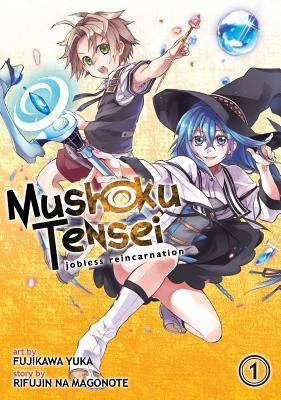
Manga vs. Light Novel: Why Fans Prefer the LN
Fans overwhelmingly prefer the Mushoku Tensei light novel (LN) over the manga primarily due to its superior depth, completeness, and fidelity to the author’s original vision. The LN serves as the source material, offering an unabridged narrative that delves deeply into Rudeus’s psyche through extensive inner monologues. These thoughts provide crucial context for his often questionable actions, explore his internal struggles with past trauma and present flaws, and showcase his intellectual growth, aspects frequently simplified or entirely omitted in the manga adaptation.
Furthermore, the light novel provides vastly more detailed world-building. Intricate explanations of the magic system, the history of the Six-Faced World, diverse cultural nuances, political landscapes, and the backstories of supporting characters are explored with a richness the manga format struggles to replicate. Reviewers on platforms like MAL and Reddit consistently point out that the manga “waters down” this complexity, sometimes feeling like a “cliché” or “generic” isekai in comparison.
Perhaps the most significant reason fans prefer the LN is completeness and progression. The light novel series is finished, offering the entire epic saga from Rudeus’s birth to his eventual end across 26 volumes. The manga, adapting this vast story at a much slower pace, is years away from completion and, as mentioned, lags significantly behind even the anime in relative terms. For readers seeking the definitive, most detailed, and complete Mushoku Tensei experience, the light novel is universally recommended as the superior choice, rendering the manga, in the eyes of many dedicated fans, largely redundant or even detrimental due to its perceived shortcomings as an adaptation.
Should You Read the Mushoku Tensei Manga? (Final Verdict)
Deciding whether to read the Mushoku Tensei manga ultimately depends on your priorities as a reader and your relationship with the source material. If you strongly prefer visual storytelling over text, find manga generally more accessible than light novels, and are primarily looking for a casual continuation of the story beyond the anime without needing exhaustive detail, then the manga might be a suitable, if flawed, option. Be prepared, however, for the criticisms regarding pacing, fan service, and omitted content to potentially impact your enjoyment.
However, for the vast majority of fans, especially those seeking the richest narrative experience, the deepest character understanding, comprehensive world-building, and the complete story progression, the recommendation heavily favors skipping the manga and reading the light novel instead. The LN provides the definitive version of Rudeus’s journey, addresses the nuances often lost in adaptation, and is considerably further ahead in the storyline than both the anime and the manga. If you loved the depth hinted at in the anime and want the full, unadulterated Mushoku Tensei experience, the light novel is undoubtedly the way to go. Reading the manga first might even lessen the impact of the superior light novel version later on.
Key Takeaway: While the manga offers a visual alternative, it’s generally considered a weaker adaptation. For the best Mushoku Tensei experience, prioritize the light novels.
Reasons to Read the Manga
Despite its drawbacks compared to the light novel, there are a few specific scenarios where reading the Mushoku Tensei manga might appeal to certain readers:
- Strong Preference for Visual Medium: If you exclusively consume stories through visual formats (anime and manga) and find reading prose challenging or less engaging, the manga offers the only visual continuation beyond the anime, however limited.
- Appreciation for the Art Style: Some readers genuinely enjoy Yuka Fujikawa’s specific art style and find value in seeing the characters and world depicted through her illustrations, regardless of adaptation fidelity.
- Casual Reading Experience: If you’re looking for a less demanding way to experience the story highlights without delving into the dense prose and extensive inner monologues of the light novels, the manga provides a more streamlined (albeit potentially shallower) version.
- Ease of Access (Potentially): Depending on availability and personal preference, some might find acquiring and reading manga volumes simpler or quicker than tackling the longer light novel series.
- Collecting Purposes: Dedicated fans might collect the manga volumes simply as part of their Mushoku Tensei collection, appreciating it as a different take on the story.
Reasons to Skip the Manga (and Read the LN Instead)
Conversely, the arguments for skipping the manga in favor of the light novel are numerous and compelling for most fans:
- Superior Story Depth and Detail: The light novel offers significantly richer characterization (especially Rudeus’s internal thoughts), more intricate world-building, and a more nuanced exploration of themes. The manga omits much of this crucial detail.
- Faithful Adaptation: The light novel is the original story. Reading it ensures you experience the narrative exactly as the author intended, without the compromises and changes inherent in the manga adaptation process.
- Vastly More Story Content: The light novel series is complete and contains far more story content than the ongoing manga, which lags considerably behind. If you want to know what happens next after the anime, the LN is the fastest and most complete route.
- Avoiding Adaptation Spoilers/Disappointment: Reading the manga first might spoil key plot points that are handled with more depth and impact in the light novel, potentially lessening the experience of reading the superior source material later.
- Better Pacing and Consistency: The light novel generally has more consistent and deliberate pacing compared to the manga’s often-criticized unevenness.
- Addressing the “Bad Adaptation” Concerns: Directly addressing the widespread fan opinion, reading the LN avoids the common pitfalls and criticisms leveled against the manga (omissions, simplification, pacing, handling of sensitive themes).
- The Definitive Experience: For those who want the most comprehensive, detailed, and emotionally resonant version of Mushoku Tensei, the light novel is the undisputed choice.
FAQs About Mushoku Tensei Manga Review:
Is the Mushoku Tensei manga worth reading if I liked the anime?
It depends on your priorities. If you primarily want any continuation in a visual format and don’t mind potential pacing issues or omitted details, you might find some enjoyment. However, most fans agree the light novel offers a far superior continuation in terms of depth and story progression, making the manga less “worth it” for many anime fans.
Why do many fans say the Mushoku Tensei manga is bad?
Fans often label the manga “bad” primarily because they consider it a poor adaptation of the beloved light novels. Key criticisms include significant omission of crucial details (like Rudeus’s inner thoughts and world-building), uneven pacing, sometimes excessive or poorly handled fan service, and a general watering down of the story’s complexity and emotional nuance compared to the source material.
How far behind the light novel is the Mushoku Tensei manga?
The manga is significantly behind the light novel. The light novel series consists of 26 completed volumes. The manga adapts the story at a much slower rate and, despite being published since 2014, has covered only a fraction of the total LN content. It’s estimated to be years away from reaching the LN’s conclusion.
Does the Mushoku Tensei manga have a lot of fan service or ecchi scenes?
Yes, the manga does contain notable fan service and ecchi elements, often stemming from Rudeus’s perverted thoughts and actions. While present in the light novel as well, many critics feel the manga emphasizes these elements more frequently or crudely through visual gags, sometimes to the detriment of the overall tone and character development.
Is the Mushoku Tensei manga finished or still ongoing?
The Mushoku Tensei manga is still ongoing. It began serialization in May 2014 and continues to be published in Monthly Comic Flapper. This contrasts with the original light novel series, which concluded its run in November 2022.
What chapter does the Mushoku Tensei manga start after the anime season 2?
Anime Season 2 adapted content roughly up to the end of Light Novel Volume 12. The corresponding point in the manga is typically around Chapter 85-86, covering the beginning of the Newlyweds Arc/Labyrinth Arc. However, due to adaptation differences, exact chapter alignments can vary slightly.
Is the art style in the Mushoku Tensei manga good?
Generally, yes. Yuka Fujikawa’s art style is often considered one of the manga’s strengths. It’s typically described as clean, expressive, and competent at depicting both emotional moments and action sequences. While subjective, the art itself is rarely the main point of criticism; rather, it’s how the art is used within the constraints of the adaptation.
Where can I read the Mushoku Tensei manga officially?
The Mushoku Tensei manga is licensed in English by Seven Seas Entertainment. You can purchase physical volumes or digital editions through major book retailers like Amazon, Barnes & Noble, Book Depository, Right Stuf Anime, and digital platforms like BookWalker, ComiXology (Kindle), Google Play Books, and Apple Books.
Should I read the manga or the light novel first for Mushoku Tensei?
Most fans strongly recommend reading the light novel first (or instead of the manga). The light novel provides the complete, detailed, and original story. Reading the manga first might lead to disappointment due to its omissions and adaptation choices, and it covers significantly less ground.
Are there major plot differences between the Mushoku Tensei manga and light novel?
While the manga follows the main plot points, it omits significant amounts of detail, character perspectives, inner monologues, and world-building found in the light novels. These omissions can sometimes alter the context or impact of certain events, leading fans to consider it a different, and often lesser, experience rather than having major plot deviations.
Summary:
Navigating the world of Mushoku Tensei beyond the anime presents a clear choice, heavily influenced by fan consensus and adaptation quality. The Mushoku Tensei manga review landscape reveals an adaptation appreciated for its art and core character portrayal but widely criticized for being a pale shadow of its source material. It suffers from significant omissions of detail, uneven pacing, and a controversial handling of fan service, leading many dedicated fans to label it a “bad” or poor adaptation.
Crucially, the manga offers very limited story progression compared to the completed light novel series. While it provides a visual path forward, it’s a slow one that lacks the depth, nuance, and completeness of Rifujin na Magonote’s original text. The light novel remains the gold standard, offering the rich character psychology, intricate world-building, and full narrative arc that has earned Mushoku Tensei its acclaimed status within the isekai genre.
Therefore, the verdict leans heavily towards recommending the light novels for anyone seeking the definitive Mushoku Tensei experience after finishing the anime. While the manga exists as an option, approaching it requires tempered expectations and awareness of its acknowledged flaws compared to the source material.
What are your thoughts on the Mushoku Tensei manga? Did you read it, or did you jump straight to the light novels? Share your experiences and opinions in the comments below!

